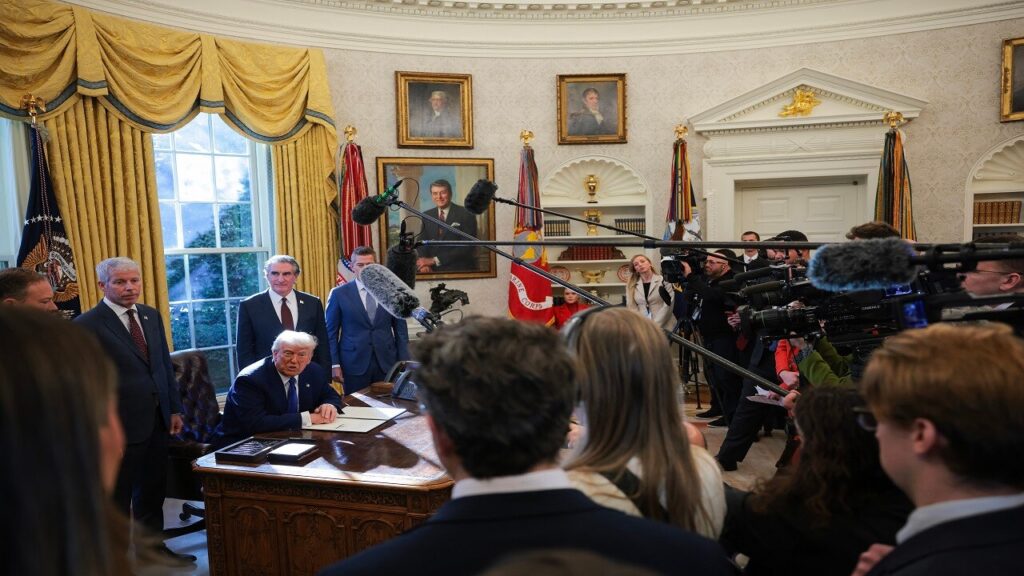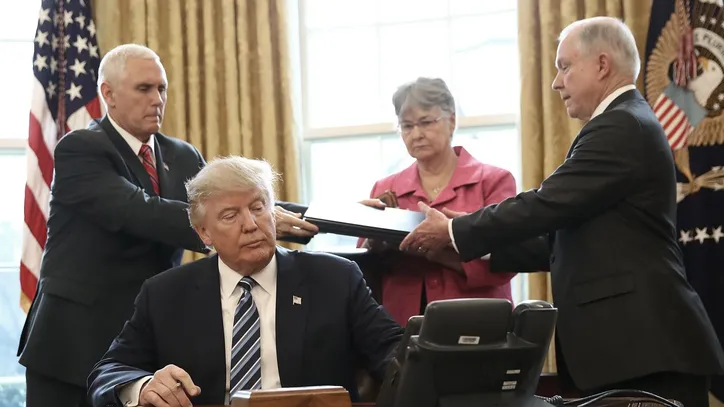On June 4, 2025, President Donald J. Trump signed a new presidential proclamation expanding the U.S. travel ban on certain foreign nationals. Titled “Restricting the Entry of Foreign Nationals to Protect the United States from Foreign Terrorists and Other National Security and Public Safety Threats,” the policy revives and broadens measures similar to those introduced during Trump’s first term. The move reflects a strategic shift in U.S. immigration policy, with implications for national security, international relations, and the country’s global positioning.
But beyond the headlines, this move isn’t just about immigration—it’s about politics, diplomacy, and how the U.S. positions itself on the world stage.
Table of Contents
What the Proclamation Says
Under the new order, the U.S. is completely banning entry to citizens of 12 countries, and placing partial restrictions on 7 more. According to the White House, the goal is to prevent individuals from entering the country if their home nations do not meet certain U.S. security standards.
Full Ban Countries:
- Afghanistan
- Myanmar (Burma)
- Chad
- Republic of the Congo
- Equatorial Guinea
- Eritrea
- Haiti
- Iran
- Libya
- Somalia
- Sudan
- Yemen
Countries with Limited Restrictions:
- Burundi
- Cuba
- Laos
- Sierra Leone
- Togo
- Turkmenistan
- Venezuela
The restrictions vary. For some countries, no one can enter at all. For others, only specific types of visas—like student or tourist visas—are affected.
However, there are exceptions:
- Green card holders (permanent residents)
- People with valid visas issued before the ban begins
- Athletes competing in major events like the Olympics or FIFA World Cup
- Individuals whose entry is deemed important for U.S. national interest

Why This Matters: Beyond Security
The administration says this is about protecting the country. Officials point to things like weak passport systems, poor information-sharing between governments, and high rates of visa overstays. But the reality is that this policy also sends a strong message globally.
The Geopolitical Angle
Many of the countries on this list are already dealing with conflict, political instability, or tense relations with the United States. For example:
- Iran has long been in conflict with the U.S. over nuclear programs and regional influence.
- Venezuela is under heavy U.S. sanctions, and the American government has openly supported opposition forces there.
So while national security is the official reason, many critics say this policy looks like it’s punishing countries for not aligning with U.S. interests. It could be seen as a way to apply pressure without using military or economic force.
Reactions from Around the World
The response has been mixed—and in some cases, angry. Human rights organizations argue that this move unfairly targets people based on where they’re from rather than any proven risk. Some countries, like Sudan and Haiti, have already voiced concerns through diplomatic channels.
The United Nations has warned that this kind of policy could interfere with global refugee efforts, especially for people fleeing warzones in countries like Afghanistan and Somalia.
Even U.S. allies might feel the strain. Countries like France and Germany, which have large immigrant populations from these regions, could find themselves caught between supporting American policies and maintaining their own values.
Legal Grounds and Timeline
The proclamation uses sections 212(f) and 215(a) of the U.S. Immigration and Nationality Act, which allow the President to restrict foreign entry if it’s deemed harmful to national interests.
The new rules are set to go into effect on June 9, 2025, at 12:01 a.m. EDT. Legal experts expect there could be challenges in court, similar to the controversy surrounding the 2017 “travel ban.”
Final Thoughts: A Bold Step with Complex Effects
This travel restriction is more than just a list of countries—it’s a signal. It shows how the U.S., under the Trump administration, is choosing to prioritize security and national interest, sometimes at the cost of global goodwill.
While the intent may be to protect American borders, the long-term effects could include weakened diplomacy, strained international relationships, and reduced cooperation in global crises.
In today’s interconnected world, immigration policy isn’t just about who gets to cross a border—it’s a reflection of a nation’s values, alliances, and global strategy.
More From Infonix:
- Ukraine Takes Bold Step with Drone Strikes on Russian Airbases
- Jamal Roberts Wins American Idol 2025 — The Heartfelt Journey of a P.E. Teacher Turned Superstar
- New York: Top 9 Tourist Attractions in New York Must-Visit Spots in the Empire State
- Why Hoover Dam Should Be on Your Travel List ?
- Arabella Stanton – The Fresh Face of Hermione Granger in the Harry Potter Original Series
- 10 Best Places to Visit in Singapore – Your Ultimate Travel Guide



